
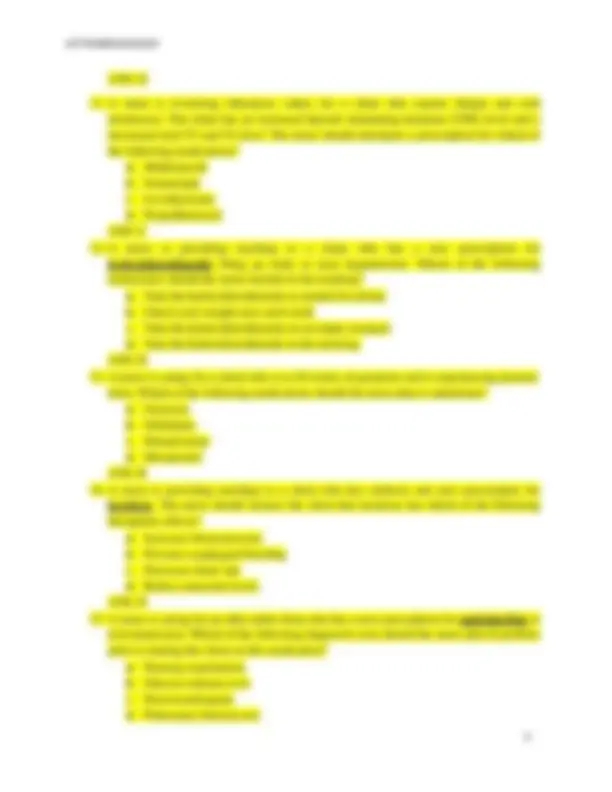
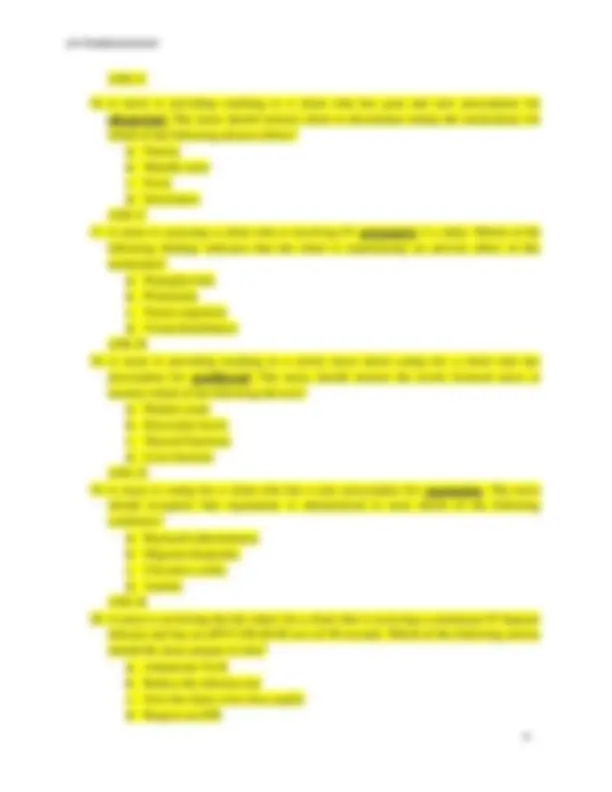
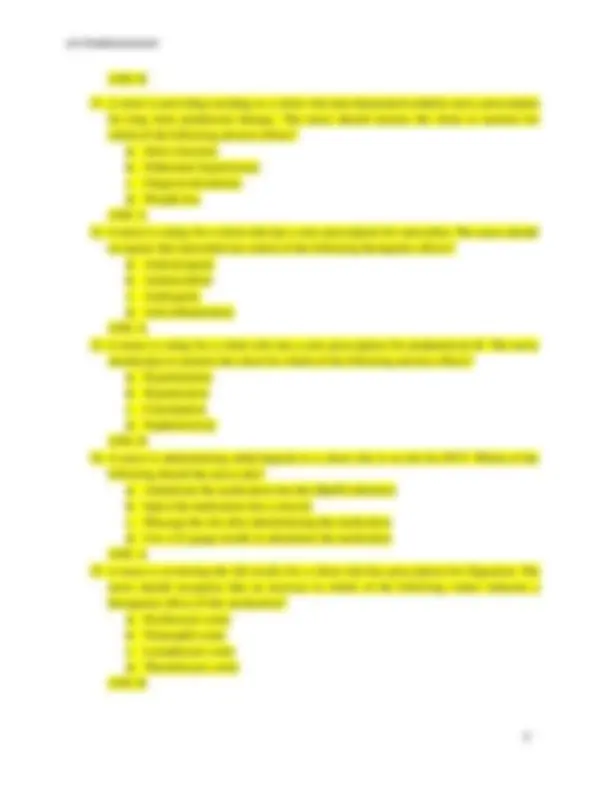
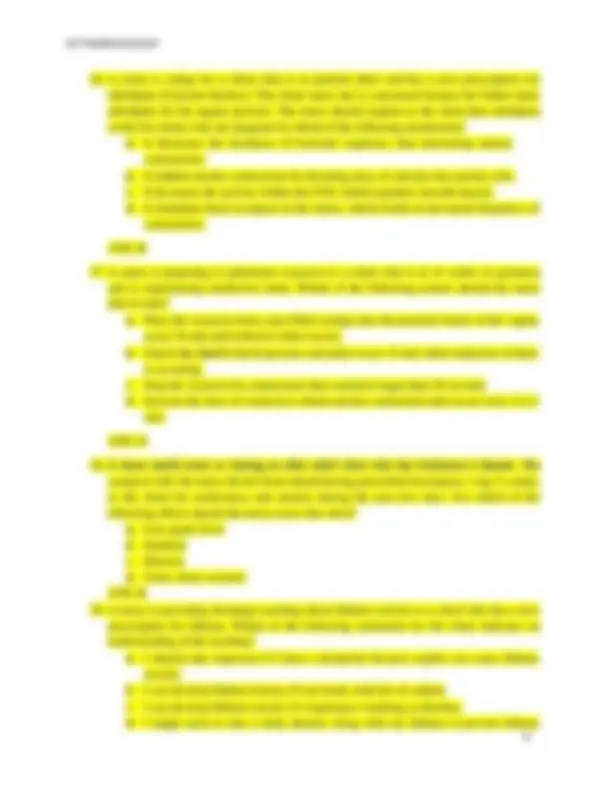

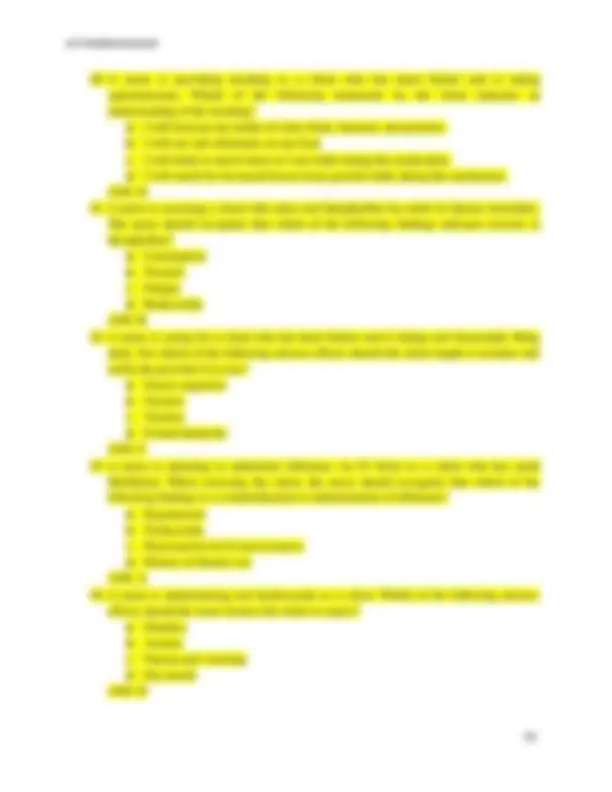
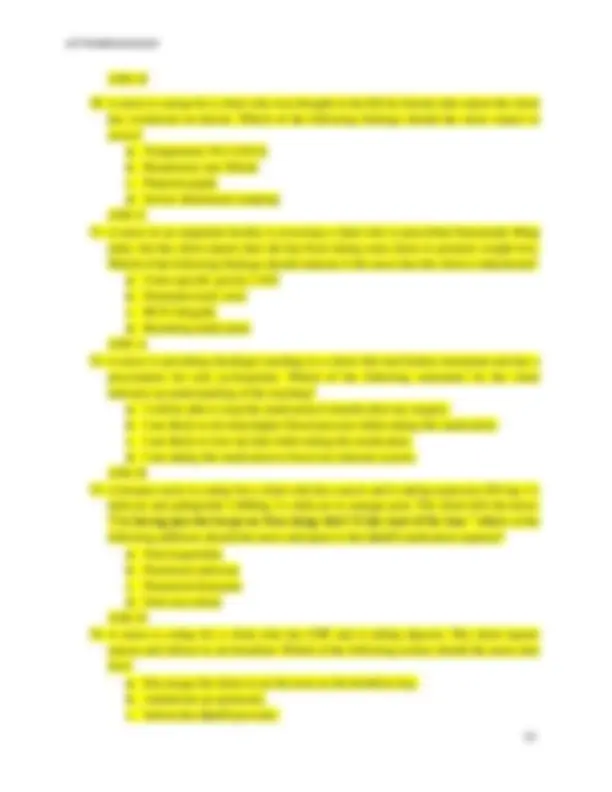
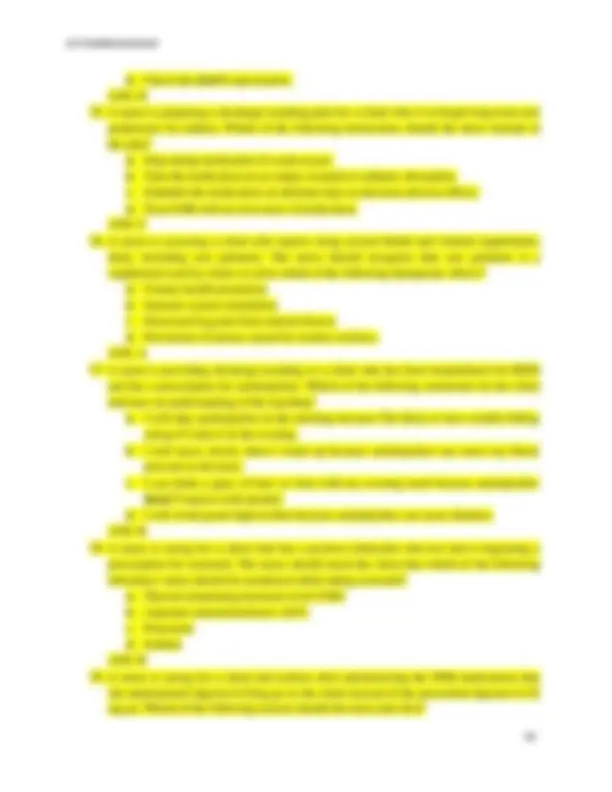
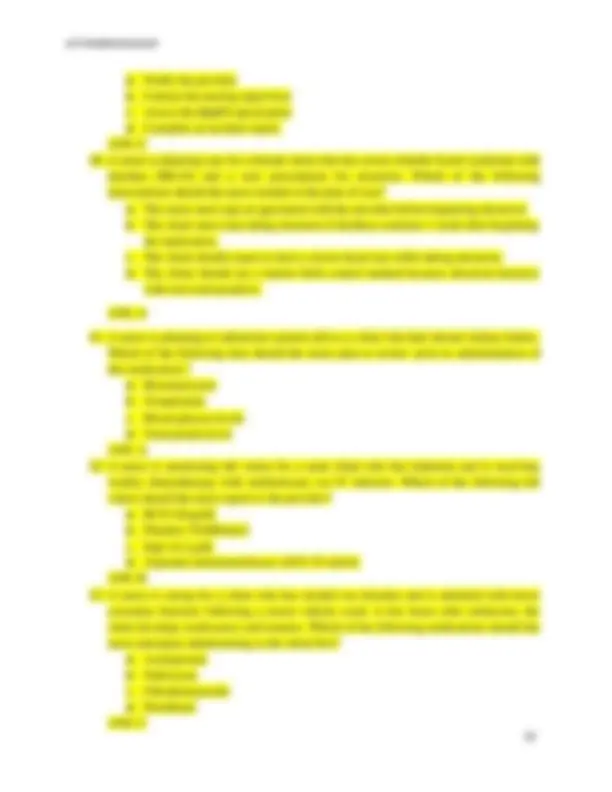
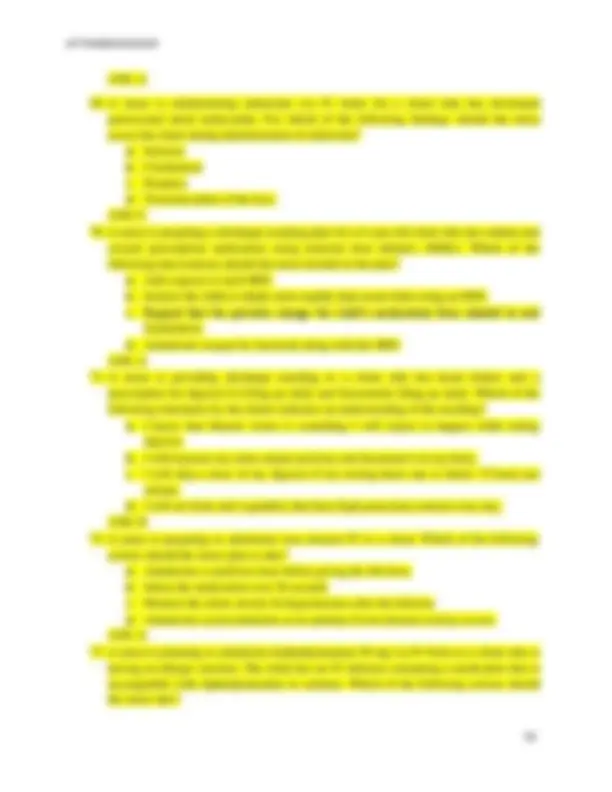
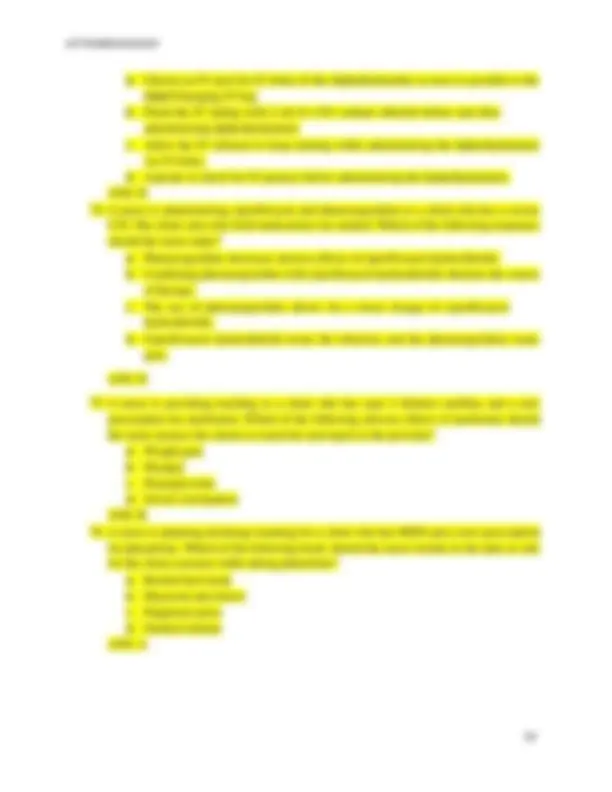



Study with the several resources on Docsity

Earn points by helping other students or get them with a premium plan


Prepare for your exams
Study with the several resources on Docsity

Earn points to download
Earn points by helping other students or get them with a premium plan
Community
Ask the community for help and clear up your study doubts
Discover the best universities in your country according to Docsity users
Free resources
Download our free guides on studying techniques, anxiety management strategies, and thesis advice from Docsity tutors
ATI PHARM 2025.pdf graded 100% compelte
Typology: Exams
1 / 20

This page cannot be seen from the preview
Don't miss anything!













d. Check the client’s apical pulse. ANS: D
d. I could have more problems with high blood sugars while taking this medication.
a. Choose an IV post for IV bolus of the diphenhydramine as near as possible to the client’s hanging IV bag b. Flush the IV tubing with 2 ml of o.9% sodium chloride before and after administering diphenhydramine. c. Allow the IV infusion to keep running while administering the diphenhydramine via IV bolus. d. Aspirate to check for IV patency before administering the diphenhydramine. ANS: D